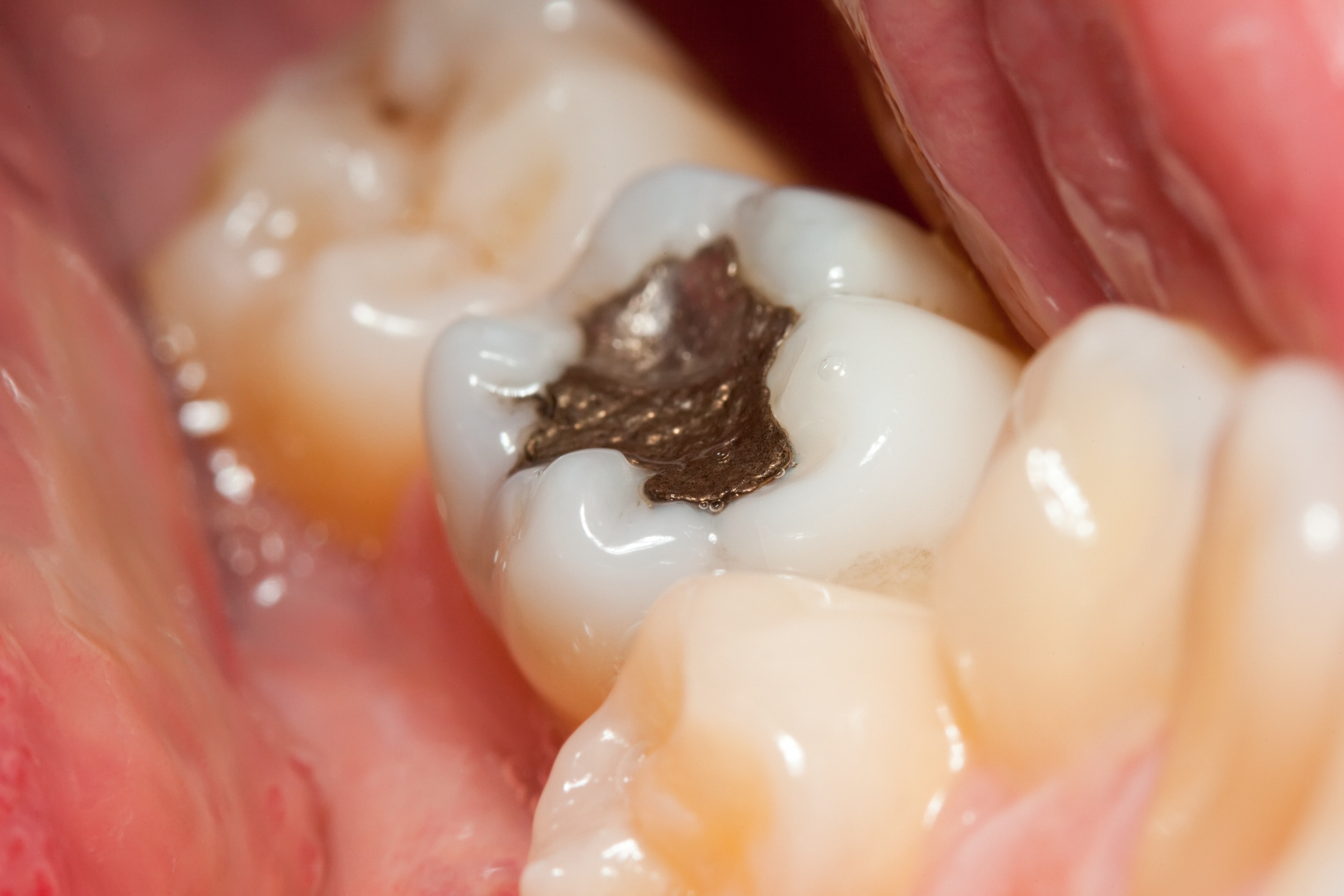How Much Does a Tooth Filling Cost?

A tooth filling can cost anywhere between $100 to $500. Tooth fillings are a common dental procedure that aims to restore and repair teeth affected by cavities and decay.
Dental fillings can vary in cost depending on factors such as the material used, the location of the dental practice, and the complexity of the procedure. The most common types of fillings include amalgam, composite resin, gold, and porcelain. Amalgam fillings, which are made from a mixture of metals, tend to be more affordable compared to other options.
Composite resin fillings, on the other hand, are tooth-colored and can blend seamlessly with your natural teeth, but they can be more expensive. It’s important to consult with your dentist to determine the most suitable option for you and to get an accurate estimate of the cost involved.
Types Of Tooth Fillings
A tooth filling is a common dental procedure that helps restore the function and structure of a damaged tooth. There are different types of tooth fillings available, each with its own cost and benefits.
Amalgam Fillings: These are traditional silver-colored fillings made from a combination of metals, including mercury, silver, tin, and copper. They are durable and generally the most affordable option. The cost of amalgam fillings can range from $50 to $150 per filling, depending on the size and location of the tooth.
Composite Fillings: These are tooth-colored fillings made from a mixture of resin and glass or quartz. They blend seamlessly with the natural tooth color, making them a popular choice for visible teeth. Composite fillings are more expensive than amalgam fillings, usually ranging from $90 to $250 per filling.
Gold Fillings: These fillings are made from gold alloy and are highly durable and long-lasting. They can be a more expensive option, with costs ranging from $250 to $4,500 per filling, depending on the size and complexity of the restoration.
It’s important to note that dental insurance coverage can vary, and the cost of tooth fillings may also depend on the dentist’s location and experience. It’s best to consult with your dentist to determine the most suitable and cost-effective option for your specific dental needs.
| Type of Tooth Filling | Cost Range |
|---|---|
| Amalgam Fillings | $50 – $150 |
| Composite Fillings | $90 – $250 |
| Gold Fillings | $250 – $4,500 |

Credit: www.yourdentistryguide.com
Factors Affecting The Cost Of Tooth Fillings
The cost of a tooth filling can vary depending on several factors. One important factor is the location of the dental clinic. Prices may vary between different cities or regions. Another factor is the expertise of the dentist. Experienced dentists may charge higher fees for their services compared to less experienced ones. The size and location of the cavity also play a role in determining the cost. Larger or more complex cavities may require more time and materials to fill, resulting in higher costs. Additionally, the type of filling material used can affect the price. Different materials have different costs, with some being more expensive than others. It’s important to discuss these factors with your dentist to get a better understanding of the total cost of your tooth filling.
Average Cost Of Tooth Fillings
htmlThe cost of a tooth filling can vary depending on several factors, including the type of filling material used, the complexity of the procedure, and the location of the dental practice. On average, the cost of a tooth filling in the United States ranges from $100 to $300 per tooth.
National Average Cost
The national average cost for a tooth filling is approximately $150 to $200 per tooth. This average includes both amalgam (metal) fillings and composite (tooth-colored) fillings. However, keep in mind that this is just an estimate, and actual costs can vary.
Variation In Cost By Region
| Region | Average Cost Range |
|---|---|
| West Coast | $150 – $250 |
| Midwest | $100 – $200 |
| Northeast | $200 – $300 |
| Southeast | $100 – $250 |
It’s important to note that these are general cost ranges and may not reflect the exact prices in your area. Factors such as the dentist’s experience and the specific location of the practice can also affect the cost of tooth fillings. To determine the precise cost of a tooth filling, it is recommended to consult with a dentist in your area.
Cost Breakdown Of Different Types Of Fillings
Wondering about the cost of a tooth filling? Let’s discuss the breakdown of different types of fillings. When it comes to amalgam fillings, they are typically the most affordable option. These fillings are made from a mixture of metals, such as silver, tin, and copper. On the other hand, composite fillings are a bit more expensive. They are made from a tooth-colored resin material that blends in with your natural teeth. Lastly, gold fillings are the most expensive. While they are quite durable and can last for a long time, their cost is significantly higher than other filling options.
Dental Insurance Coverage For Tooth Fillings
The cost of a tooth filling can vary depending on various factors such as the location of the dental clinic, the type of filling material used, and whether or not you have dental insurance coverage.
When it comes to dental insurance coverage for tooth fillings, it’s important to understand the difference between in-network and out-of-network coverage. In-network coverage means that the dentist you visit participates in your insurance network, which can result in lower out-of-pocket costs for you. On the other hand, out-of-network coverage may require you to pay a higher percentage of the filling cost.
Another aspect to consider is pre-authorization requirements. Some dental insurance plans require pre-authorization before a tooth filling procedure can be done. This means that your dentist will need to submit a request to your insurance provider for approval before proceeding with the treatment.
Additionally, dental insurance plans often have an annual maximum coverage limit. This limit is the maximum amount of money that your insurance will pay for dental procedures within a calendar year. If the cost of your filling exceeds this limit, you will be responsible for paying the remaining balance.
In conclusion, the cost of a tooth filling can be influenced by your dental insurance coverage. Being aware of in-network vs. out-of-network coverage, pre-authorization requirements, and annual maximum coverage limits can help you better understand the potential costs involved.
Coverage For Different Types Of Fillings
A tooth filling is a common dental procedure to restore a decayed or damaged tooth. The cost of a tooth filling can vary depending on several factors, including the type of filling material used. Dental insurance can help offset the cost of fillings, but coverage may vary depending on the type of filling.
| Type of Filling | Coverage |
|---|---|
| Amalgam fillings | Insurance plans often provide good coverage for amalgam fillings, which are made of a combination of metals. Typically, they are considered a standard dental treatment and are covered by insurance at a higher percentage. |
| Composite fillings | Coverage for composite fillings, which are tooth-colored and aesthetically pleasing, can vary. Some insurance plans may cover composite fillings, but at a lower percentage compared to amalgam fillings. |
| Gold fillings | Insurance coverage for gold fillings, also known as inlays or onlays, is usually limited. These fillings are more expensive and may not be fully covered by insurance. Patients may need to bear a significant portion of the cost. |
It’s important to check with your dental insurance provider to understand the specific coverage for different types of fillings. Additionally, factors like the location of the dental clinic, the extent of the tooth damage, and additional services required can also influence the overall cost of a tooth filling.
Comparison Of Private Pay Vs. Insurance Coverage
Comparison of Private Pay vs. Insurance Coverage
| Insurance Coverage | Private Pay |
|---|---|
| Insurance companies typically cover a portion of the cost of a tooth filling, depending on the type of insurance plan and its coverage limit. | With private pay, you have more control over the choice of dentist, treatment options, and the overall dental care you receive. |
| Cost difference with insurance coverage | Factors to consider when choosing private pay |
| Insurance coverage can significantly reduce the out-of-pocket expenses for dental procedures, including tooth fillings. | Private pay may require paying the full cost of the tooth filling upfront without any insurance coverage. |
| Read the fine print of your insurance policy to understand the coverage limits, deductibles, and copayments associated with tooth fillings. | Consider the reputation and expertise of the dentist, convenience of location, and the quality of dental materials being used. |
| The cost savings with insurance coverage can make it more affordable for individuals seeking dental treatments. | Private pay offers flexibility and potentially higher-quality care, especially if you are willing to invest in a reputable dentist. |
Additional Costs Associated With Tooth Fillings
Undergoing a tooth filling procedure can help restore your dental health. However, it is essential to be aware of the additional costs that may be associated with this treatment. Prior to receiving a filling, your dentist may require pre-filling procedures such as x-rays or dental cleanings to assess the condition of your tooth and prepare it for the filling. These preliminary steps can incur additional expenses.
Furthermore, if you experience dental anxiety or require extensive dental work, you may opt for sedation or anesthesia during the filling procedure. These services may come with their own fees that can vary depending on the sedation method chosen.
After the filling is placed, it is important to follow proper post-filling care to ensure successful healing and prevent complications. Post-filling care costs may arise if you need any pain medications, antibiotics, or require additional follow-up appointments to monitor your progress.
Tips For Managing Tooth Filling Costs
A tooth filling is a common dental procedure that helps restore teeth damaged by decay or cavities. The cost of a tooth filling can vary depending on several factors.
Dental discount plans: One way to manage tooth filling costs is by enrolling in a dental discount plan. These plans offer reduced prices on dental services, including fillings, for members.
Flexible spending accounts: Another option to consider is utilizing a flexible spending account (FSA). FSAs allow you to set aside pre-tax dollars for eligible medical expenses, including dental procedures like fillings.
Financing options: If you’re concerned about the upfront cost of a tooth filling, many dental clinics offer financing options. This allows you to pay for the procedure over time, rather than in one lump sum.
By exploring dental discount plans, utilizing FSAs, and exploring financing options, you can effectively manage the costs associated with tooth fillings. Remember to consult with your dentist to understand your specific situation and discuss the best approach for your dental and financial needs.
Importance Of Regular Dental Check-ups
Regular dental check-ups are incredibly important in maintaining oral health and preventing the need for costly dental procedures. One of the key benefits of these check-ups is early detection of cavities. When cavities are caught early, they can often be treated with a simple tooth filling, which is a much more affordable option compared to more extensive dental work.
The cost of a tooth filling can vary depending on several factors, including the location of the dental clinic, the material used for the filling, and the complexity of the cavity. On average, the cost of a tooth filling can range from $50 to $450 per tooth. It is recommended to check with your dentist for an accurate cost estimate based on your specific needs.
In addition to cost savings, regular dental check-ups can help ensure overall oral health. Dentists are able to identify potential issues early on, such as gum disease or oral cancer, which can be crucial in successful treatment and prevention. Taking care of your oral health through regular dental check-ups is a wise investment that can save you money and prevent more complex dental problems in the future.
Frequently Asked Questions Of How Much Does A Tooth Filling Cost?
How Much Should I Pay For A Filling?
The cost of a filling can vary, but on average, you can expect to pay around $100 to $500 per tooth. The actual price may depend on various factors, such as the type of filling material used, the location of the dental clinic, and your dental insurance coverage.
Do Dentists Charge Per Filling?
Dentists charge per filling based on the type of filling needed and their own pricing structure.
Are Cavity Fillings Worth It?
Yes, cavity fillings are worth it. They help to restore teeth, prevent further decay, and improve oral health.
How Long Do Fillings Last?
Fillings typically last for several years, but the exact duration depends on factors like oral hygiene, diet, and the type of filling material used. Regular dental check-ups and maintaining good oral habits can help extend the lifespan of fillings.
Conclusion
The cost of a tooth filling can vary based on factors such as the location, type of material used, and the dentist’s experience. It’s important to consult with your dentist to determine the most appropriate treatment and its associated costs.
Investing in a tooth filling can help prevent further damage and potential complications in the long run. Remember, prioritizing your oral health is a worthwhile investment.




